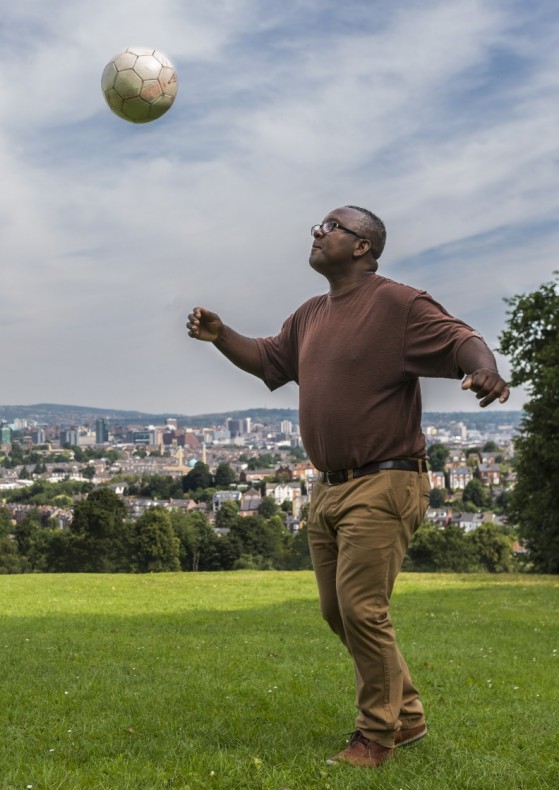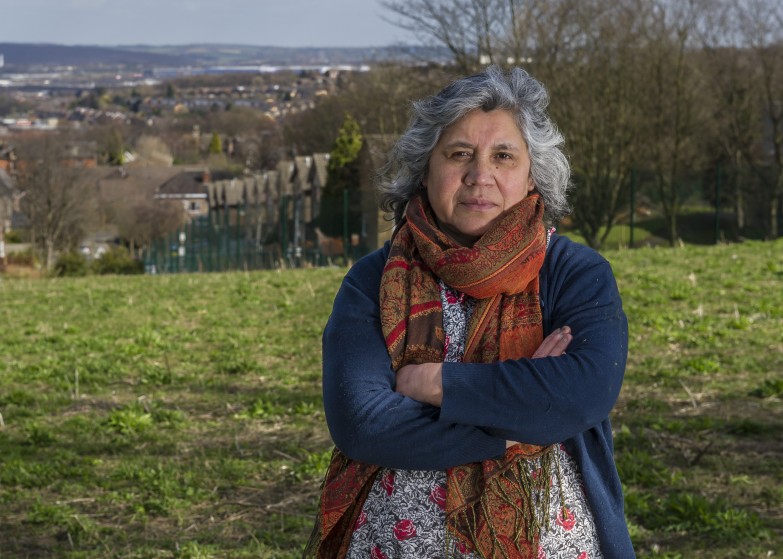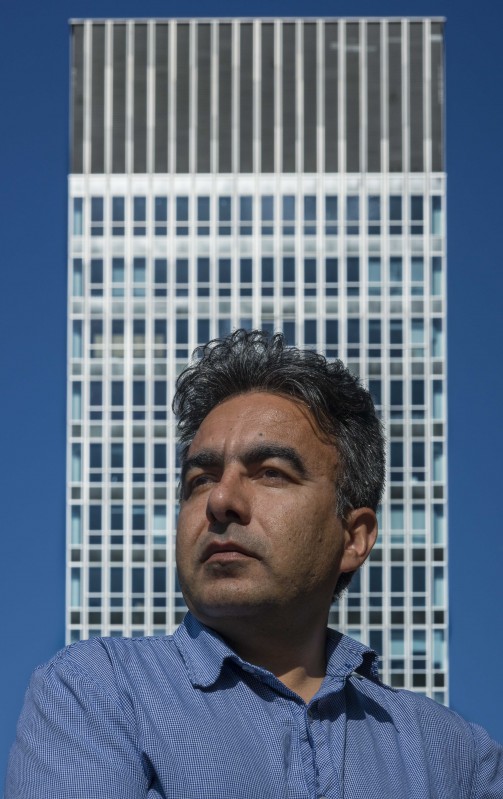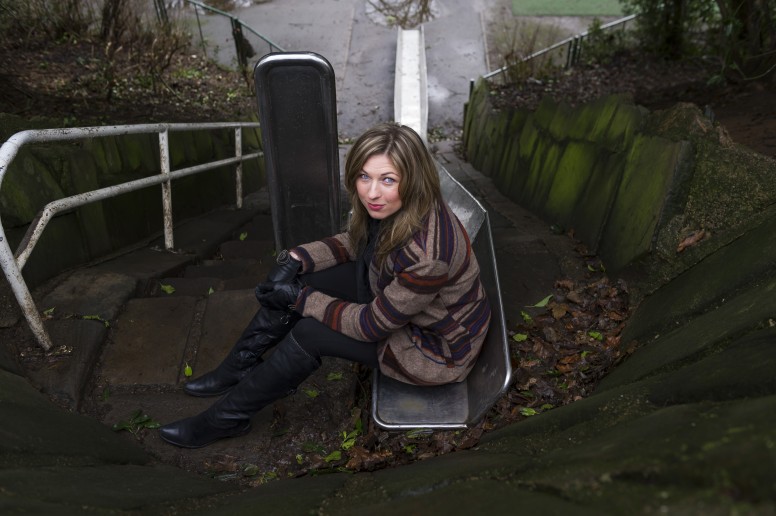Arrivals – humanising immigration
On Monday 12 and Tuesday 13 October, at the University of Sheffield’s ‘Migrants in the City’ conference at Cutler’s Hall, there’s a sneak preview of a project by Jeremy Abrahams that is going to be shown in full in 2016. In this guest blog, Jeremy explains the background to his project and what he was hoping it would show.
‘We are all immigrants: it simply depends how far back you go.’
Robert Winder (2005) Bloody Foreigners: The Story of Immigration to Britain.
London: Abacus
In Bloody Foreigners, Robert Winder tells a lovely tale of the origin of the name of John O’Groats, the northernmost tip of mainland Britain. The name of the village is not, as you might think, Scottish, nor Irish, but is actually derived from Jan de Groot, a Dutchman who arrived in south-east England but moved north to start a ferry service between Scotland and Orkney. Winder’s point, of course, is that immigration has always been a part of our history, and always will be. What seems to change is attitudes towards it.
At the end of 2013 I was new to professional photography and looking for a personal project. As someone born here but whose family came from Lithuania in the nineteenth century, immigration was uppermost in my thoughts. Partly inspired by a friend who came to Sheffield from Prague on the Kindertransport in 1939, leaving her family behind, I decided to photograph one person who migrated from overseas to Sheffield in every year from 1939 to 2016. This was to be my ‘Arrivals’ project.
Each subject chooses where in Sheffield they would like their picture to be taken. So ‘Arrivals’ is a portrait of the city, of the pattern of migration and of 77 individuals, documenting and celebrating the diversity of Sheffield’s population.
Of course, an image can say something about the subject’s life, but it cannot fully explain why they left their country of origin and came to Sheffield. So each subject’s image is accompanied by a short piece of text – in their own voice – which enhances the visual story and makes us aware of the uniqueness of each person’s experience.
Like most major urban areas of the UK, Sheffield has substantial communities of Afro-Caribbean and Asian origin.

George Grant arrived from Jamaica in 1965. ‘’I’m the youngest of 10 children. My dad – a joiner – came to Sheffield with my oldest sister in 1960 and I came with my mum and five other siblings five years later. When I was a little older, Sheffield United wanted to sign me as a schoolboy, but I didn’t fancy all the training; I just like playing.”

Mohammed Younis arrived from Pakistan in 1958. “My grandfather came before the Second World War, my father came in 1952 and I arrived from Pakistan as an 11 year old in 1958. In 1967 I joined the council’s Youth Service and in time completed my education, attending the universities of Durham, Manchester and Bradford, achieving an MA in International Politics and Security Studies at the latter.”
Sheffield, as the first ‘City of Sanctuary’, has a track record of welcoming refugees whose stories reflect the troubles in their countries of origin. Many refugees from the Pinochet dictatorship settled in Sheffield during the 1970s.

Isilda Lang arrived from Chile in 1977. “As a refugee escaping political persecution it was terrible to suffer torture, fear and nightmares of persecution. Being displaced from the place you were born is not easy, because you have to readjust to everything, practically to be reborn. The language was the hardest thing to learn – it took me five years to have the confidence to speak English. I was part of the Red Cross when another tragedy happened in my life: the Hillsborough disaster of April 1989, where I worked alongside doctors and nurses on the day.”
More recent events around the world have also brought people to Sheffield.

Habib Josefi arrived from Afghanistan in 2005. “The day I was told that I could live in England was the happiest of my life – I would no longer be forced to move from country to country in search of sanctuary. My family had been forced to flee from Afghanistan to Iran three times as regimes changed and foreigners intervened in the country. When the Taliban took over, I was forced to flee yet again. I moved around the world trying to find a permanent home, spending time in Iran, Turkey and Russia before finding temporary sanctuary in Cuba. I learned Spanish well enough to register for a university course and was halfway through my first year when I was told I must find somewhere else to go. That somewhere was the UK, which accepted me as a refugee.”
Of course the free movement of labour within the EU has also brought new Arrivals.

Magdalena Garpiel arrived from Poland in 2006. “My husband Adam and I were running a successful business with a partner in Bielsko-Biala when we decided to leave Poland. We wanted to learn another language and meet new people – a new adventure.”
And finally, the story of a young woman who came to Sheffield as a student, to find herself separated from her family during the bombing of Gaza by Israel in 2014.

Malaka Mohammed Shwaik Arrived from Gaza in 2013 “In 2013 I was given a fee waiver to study for a Masters in Global Politics and Law at Sheffield University. Travelling here from Gaza/Palestine was not easy. I experienced humiliation and discrimination many times when I tried to cross the border from Gaza. It took me some time to start engaging with the community around me, but since those early days I have spoken in many conferences throughout Europe to raise awareness of the situation in Palestine.”
Jeremy Abrahams
‘Arrivals’ project: www.jeremyabrahams.co.uk/arrivals
Subjects are still needed! Please contact me on info@jeremyabrahams.co.uk
A small number of ‘Arrivals’ images can be seen at the University of Sheffield’s ‘Migrants in the City’ conference at Cutler’s Hall on Monday 12 and Tuesday 13 October 2015.
The full ‘Arrivals’ exhibition will open at Weston Park Museum in Sheffield in late summer 2016.


Leave a Reply